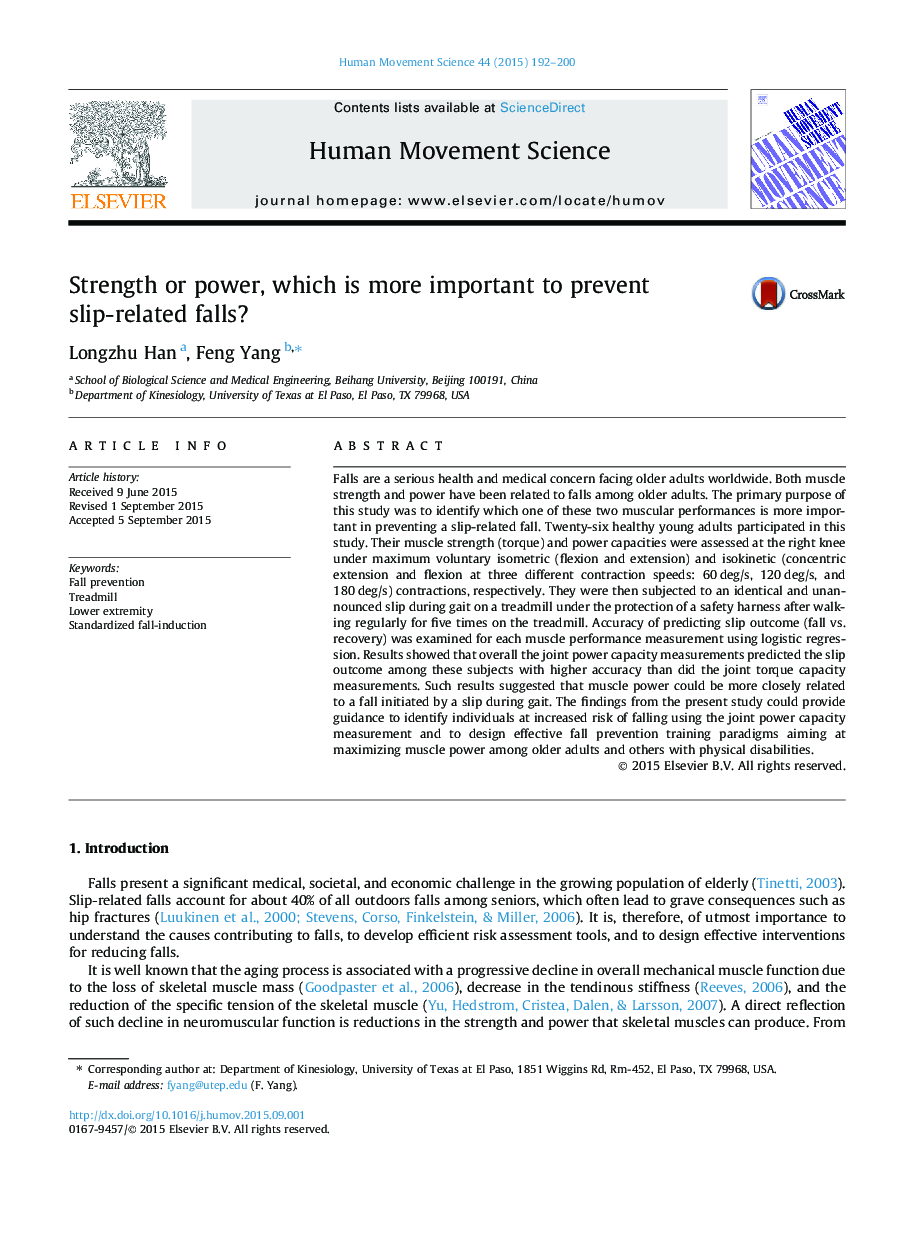| Article ID | Journal | Published Year | Pages | File Type |
|---|---|---|---|---|
| 7291833 | Human Movement Science | 2015 | 9 Pages |
Abstract
Falls are a serious health and medical concern facing older adults worldwide. Both muscle strength and power have been related to falls among older adults. The primary purpose of this study was to identify which one of these two muscular performances is more important in preventing a slip-related fall. Twenty-six healthy young adults participated in this study. Their muscle strength (torque) and power capacities were assessed at the right knee under maximum voluntary isometric (flexion and extension) and isokinetic (concentric extension and flexion at three different contraction speeds: 60Â deg/s, 120Â deg/s, and 180Â deg/s) contractions, respectively. They were then subjected to an identical and unannounced slip during gait on a treadmill under the protection of a safety harness after walking regularly for five times on the treadmill. Accuracy of predicting slip outcome (fall vs. recovery) was examined for each muscle performance measurement using logistic regression. Results showed that overall the joint power capacity measurements predicted the slip outcome among these subjects with higher accuracy than did the joint torque capacity measurements. Such results suggested that muscle power could be more closely related to a fall initiated by a slip during gait. The findings from the present study could provide guidance to identify individuals at increased risk of falling using the joint power capacity measurement and to design effective fall prevention training paradigms aiming at maximizing muscle power among older adults and others with physical disabilities.
Related Topics
Life Sciences
Neuroscience
Cognitive Neuroscience
Authors
Longzhu Han, Feng Yang,
